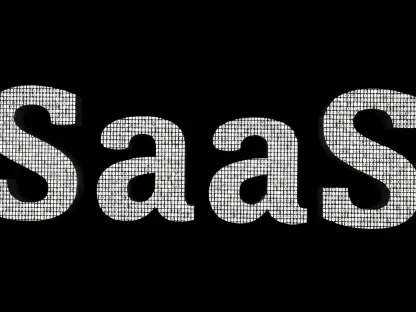The advent of artificial intelligence has brought about seismic changes in various industries, including the creative sector. Yet, despite the plethora of AI tools available, many fail to effectively serve the unique needs of professional creatives. Flora, a promising new startup founded by Weber Wong, is set to address this challenge head-on. Differentiating itself from existing AI models, Flora presents an innovative “infinite canvas” tool tailored specifically for creative professionals, aiming to integrate advanced AI capabilities with an intuitive, user-friendly interface. The potential impact of this tool in reshaping creative workflows could be monumental.
The Vision Behind Flora
A Need for Better Creative AI Tools
Weber Wong founded Flora with the clear vision of revolutionizing AI applications in the creative industries. Unlike many existing models that cater primarily to content generation in a somewhat detached manner, Flora emphasizes a collaborative and iterative approach. Traditional AI tools often make creation overly simplistic or, conversely, too convoluted, thus failing to meet the nuanced requirements of professional creatives. Flora addresses this gap by offering an interface where users can effortlessly generate, manipulate, and expand upon blocks of text, images, and video within a collaborative framework. This endeavor aims to bridge the gap between technology and genuine artistic control.
At its core, Flora is about optimizing existing AI models rather than creating new ones. For example, users can prompt Flora to create an image and then generate various iterations and details of that image. All these elements are visually represented on Flora’s canvas, enabling collaborative feedback loops and iterative improvement. In essence, Flora aims to do for creative professionals what modern music production software has done for musicians. By offering sophisticated tools within an accessible framework, the platform promises to significantly enhance creative output with greater efficiency and fewer limitations.
The Genesis and Evolution of Flora
Wong’s journey to founding Flora is deeply rooted in his background in both art and technology. Having realized that investment at Menlo Ventures wasn’t his true calling, Wong turned to New York University’s Interactive Telecommunications Program to merge his dual interests. Flora’s alpha version launched with an interactive art project, allowing users to stylize live GoPro footage from Wong’s perspective. This initiative was a strategic move to showcase Flora’s capabilities and attract early interest, setting the stage for the platform’s growth.
The partnership with visual design agencies like Pentagram has been instrumental in refining Flora’s product. Pentagram designers have utilized Flora to quickly generate multiple iterations of design concepts, providing crucial feedback to help tweak the tool’s functionalities. This collaborative approach ensures that Flora continues to evolve in alignment with the real-world needs of creative professionals. Wong’s diverse background and commitment to creating a valuable tool have propelled Flora forward, positioning it as a platform with real potential to transform creative workflows.
Flora’s Key Features
Leveraging Existing AI Models
One of the standout aspects of Flora is its strategic use of existing AI models. Instead of reinventing the wheel, Flora integrates these models into a cohesive and user-friendly visual interface. This approach enables users to perform a range of tasks seamlessly, including generating complex images and videos, manipulating them, and expanding upon them with ease. The visual canvas offers a space where creators can iterate and refine their work continuously, benefiting from the best AI offers without sacrificing control or usability.
Flora’s ability to generate different variations and details of an initial prompt showcases how effective use of existing AI models can significantly streamline creative processes. Visual representations of these iterations on Flora’s canvas allow for real-time feedback and collaborative development, much like a modern musician using software to produce music without needing an entire orchestra. This parallels how Flora can empower creative professionals to produce more work more efficiently with its innovative use of technology.
Ethical Considerations
An essential pillar of Flora’s approach is its ethical stance. By relying on pre-existing AI models rather than creating new ones, Flora demonstrates a respect for copyright and intellectual property issues that have plagued other AI tools in the past. Wong has been clear that Flora’s mission is not to flood the market with low-quality or derivative content. Instead, the aim is to enable genuine artistic innovation and creativity, akin to the democratizing impact of the Kodak Brownie camera in photography. By maintaining a focus on high-quality outputs and respecting the intellectual property of others, Flora positions itself as a responsible and forward-thinking player in the AI landscape for creative professionals.
Flora’s ethical commitment extends beyond just using existing models. It is about fostering an environment where creativity thrives without compromising the foundational values of artistic innovation and respect for intellectual property. This ethical stance has been well-received in a creative community often skeptical of AI’s role, helping Flora build a reputation as a tool designed for genuine enhancement rather than manipulation or commoditization of artistic efforts.
Flora’s Promise and Future
Initial Collaborations and Feedback
The early feedback from Flora’s partnerships, particularly with visual design agencies like Pentagram, has been overwhelmingly positive. Pentagram’s designers have tested Flora extensively, using it to generate multiple design iterations swiftly. This ability to iterate quickly and effectively has proven invaluable for real-world creative scenarios. The feedback garnered from these early collaborations has already started shaping Flora’s development, ensuring that the tool remains practical and aligned with the needs of professional creatives.
Wong’s background in both art and technology has been a driving force behind Flora’s success. His unique perspective allows him to identify gaps in existing tools and address them in Flora’s design. Starting with the alpha version’s interactive art project, Flora has consistently demonstrated its practical utility and potential to revolutionize creative processes. Wong’s commitment to merging technology with creative freedom has been pivotal in Flora’s development, making it a tool by creatives for creatives.
The Road Ahead
The advent of artificial intelligence has triggered significant changes across various industries, including the creative sector. However, despite the abundance of AI tools available, many fail to adequately meet the unique needs of professional creatives. Flora, an exciting new startup founded by Weber Wong, is poised to tackle this challenge directly. Distinguishing itself from existing AI models, Flora offers an innovative “infinite canvas” tool designed specifically for creative professionals. This tool aims to combine advanced AI capabilities with a user-friendly, intuitive interface. The potential impact of Flora’s tool on transforming creative processes could be profound. Wong envisions Flora as a pivotal innovation, allowing creatives to explore new horizons without being hindered by the limitations of conventional tools. As Flora gains traction, it could very well redefine how creative professionals work, bringing about a new era marked by unparalleled efficiency and creativity in their workflows.









